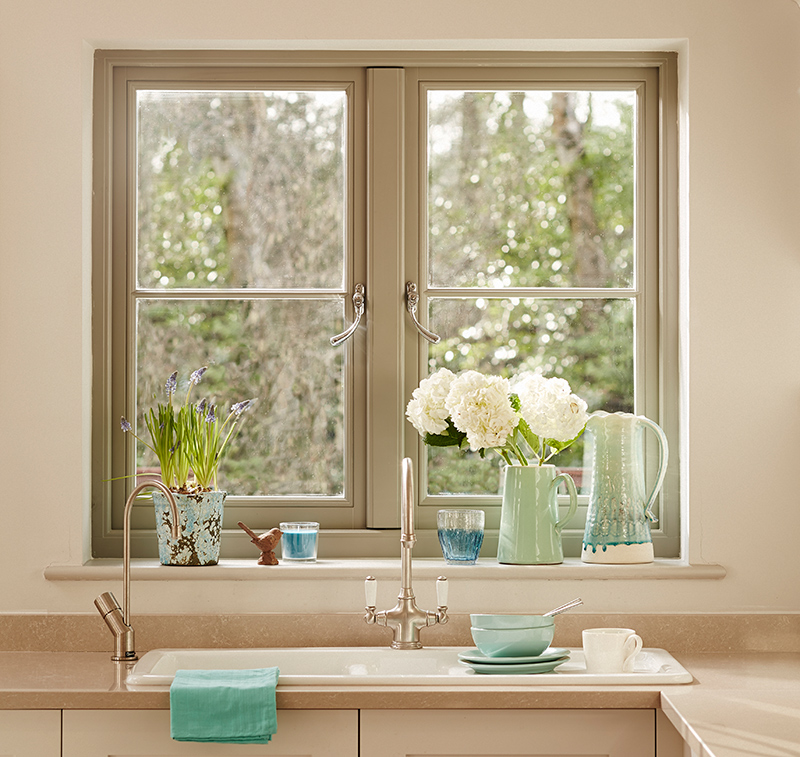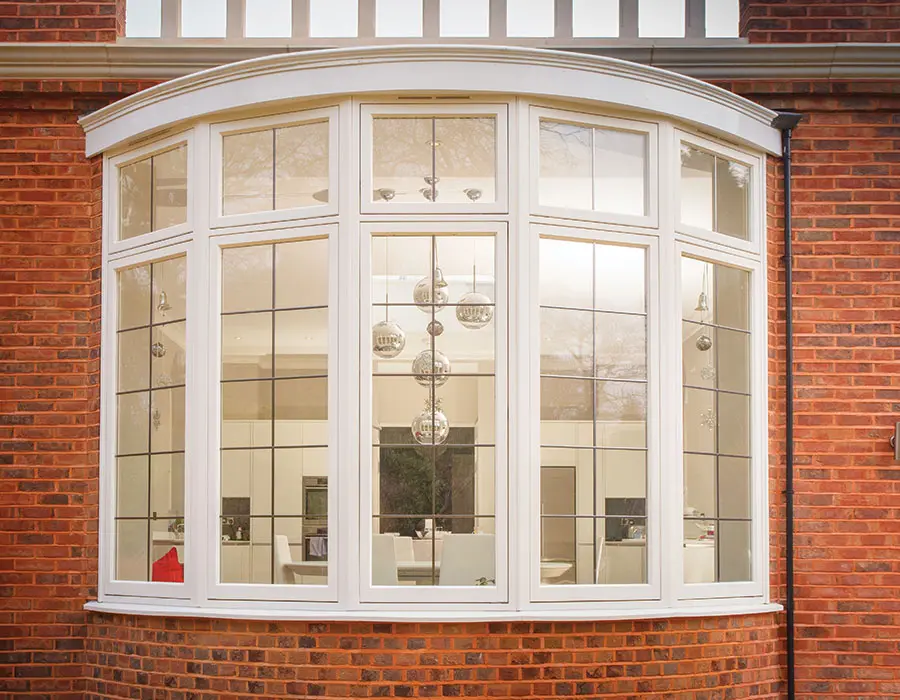Do you need window planning permission to replace your windows?
May 21, 2024 | Homeowner | Written by Nicola Harrison
Key highlights:
- Understanding the basics of window planning permission is essential before replacing your existing windows.
- Whether you need approval will depend on several factors including the type of property, the location and the material of the replacement windows.
- Often, replacing windows in listed buildings and conservation areas requires special considerations and permissions.
- Applying for planning permission involves completing a detailed application form including supporting documents and drawings of the proposed works.
- Timber windows make fantastic replacement windows in listed buildings or homes located within protected areas.

Exploring the basics of window planning permission
Planning permission is often a question that arises when it comes to replacing the windows in your home, but it doesn’t apply to every property in the UK. Understanding whether you need to get approval before replacing the windows in your home is essential to avoid potential problems further down the line.
In this blog, we’ll explore UK planning permission in more detail, providing you with all the essential information you need to know. We’ll discuss the basics, outlining when it’s required, and we’ll also guide you through the planning permission process.
Understanding planning permission for windows
Before we begin looking at the specifics of window planning permission, let’s first understand the concept itself. Planning permission is the official approval required from the local authority for certain types of building work and guarantees the completed project complies with the latest building regulations.
It’s important to remember that not all window replacements require planning permission but if you’re not sure, always double check. Further restrictions, for instance, could be in place if your property is located within a conservation area. Get confirmation before any work begins to make sure your window replacements adhere to the restrictions in place for your home.
When do you need planning permission?
To help identify whether you may need planning permission for your home improvement project, here are some examples of instances where it IS required:
- If you live in a listed building or part of a listed building you will need to apply for listed building consent to make any changes to your windows.
- If you live in a conservation area, any changes to windows may require permission to ensure the character and appearance of the community are preserved.
- If you plan to create a new window opening where there wasn’t one before. This applies to listed buildings and properties located in conservation areas.
Replacing windows in flats vs houses
It’s also important to know that the requirements for window replacements in flats and houses can differ. As flats are often leasehold properties, the individual owns the interior of the flat but not the building itself, so any alterations might need permission from the owner of the building and building management company. This adds an extra layer of approval on top of any other planning permission requirements. With this in mind, it’s always worth getting confirmation from the relevant building management company before undertaking any building work or window replacements.

Timber window vs uPVC window requirements
While there’s no problem replacing existing uPVC windows with timber windows, restrictions may apply for changing timber windows with uPVC alternatives. This is because if a property is located within a conservation area or is classified as a listed building specific regulations will be in place. In this instance, replacement home improvement products must meet a specific criteria in order to preserve the heritage and history of the property.
Thanks to their traditional and authentic look, timber windows effortlessly complement period properties and, unlike uPVC, they make fantastic replacement windows in listed buildings or homes located within protected areas.
Navigating the planning permission process
Understanding the planning permission process in the UK is essential when considering replacing the windows in your house and applying for it involves several steps. Here is an overview of the process:
How to apply for planning permission
- Complete the required application form including a detailed proposal of the works and provide all the necessary information.
- Prepare supporting documents including detailed drawings, specifications, photographs and other relevant information requested by the local authority.
- Submit the completed application form and supporting documents to the local authority’s planning department or online planning portal. You may have to pay specific fees.
Once submitted, the local authority will review the application to consider a range of factors including the impact the work will have on the property, neighbouring properties and the character or style of the wider community.
When the local authority has decided, they will notify you to confirm if your application has been approved or declined. If approved, you can continue with the planned window replacement but if denied you can either appeal the decision or adjust your proposal based on the feedback received.
What are the building regulations for windows?
In the UK, building regulations set specific standards to ensure new building materials (including replacement windows) are designed to the highest standards.
While it is the responsibility of the manufacturer to supply high quality windows that meet the latest building regulations, it’s worth being aware of the requirements to feel confident you’re investing in products that comply with industry standards.
Here is a checklist of requirements for replacement windows:
- Thermal performance: windows must meet specific thermal performance requirements to ensure improved energy efficiency and to reduce heat loss.
- Ventilation: minimum ventilation requirements are specified to create healthy indoor environments.
- Safety and security: windows should be designed to ensure homes are properly protected from unwanted intruders and homeowners are kept safe with features like safety restrictors and toughened glass.

Understanding building regulations for windows
Ultimately, before undertaking any replacement window or door project make sure you understand what permission is needed to avoid any issues moving forward. Factors such as property type, location, material of windows and type of glazing will all have an influence so it’s crucial to follow the appropriate steps and processes to increase your chance of securing approval, if it is required.
Quality timber windows and doors perfect for period properties
If, after reading this guide, you believe you may need to get full planning permission to replace the windows and doors in your home, our team of specialists can help. As a supplier of quality timber windows and doors we understand how important it is to find replacement products which deliver high performance, while maintaining the traditional aesthetics essential for listed buildings or conservation properties.
Whether you’re on the hunt for a casement window, sash window, entrance door or patio doors, we offer a variety of timber windows and doors. Browse our full range today to find the best match for your house. Alternatively, speak to a member of our team to discuss your latest home improvement project.
Frequently Asked Questions: Window Planning Permission
In this FAQ section we provide answers to some commonly asked questions related to planning permission for replacement windows. From the length of time to obtain it to not succeeding with your application, we cover a range of topics.
Can I replace windows without planning permission in a conservation area?
It may not be possible to replace your windows without planning permission if you live in a conservation area. Check with your local authority to determine what is required for your specific window replacements.
How long does it take to obtain window planning permission?
The time it takes to obtain approval for your project may vary as each case is unique. It can typically take several weeks for the local authority to evaluate and provide a decision on a planning application. Consult with your local authority for a specific timeline.
What are the common reasons for planning permission to be rejected for windows?
The most common reasons an application is not approved is often related to non-compliance with regulations for conservation areas, negative impact on the visual appearance of the property or surrounding area, significant changes in size or design of the frames or replacing windows with a different material.
